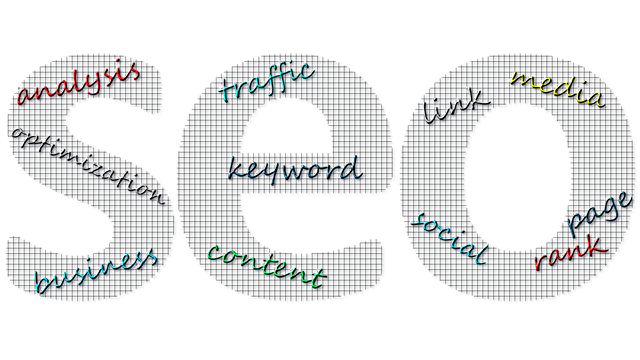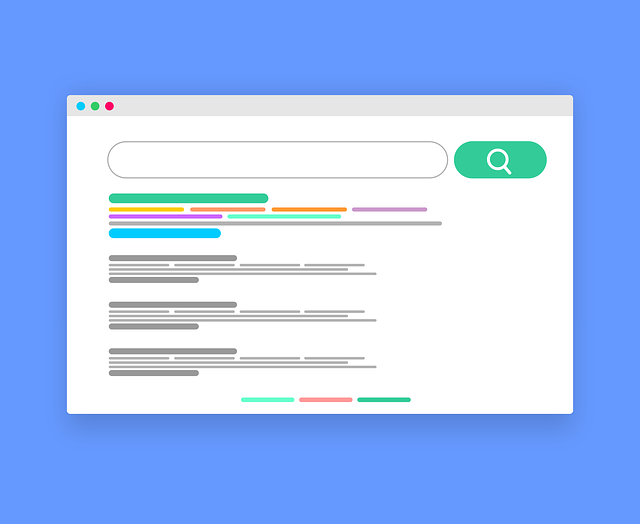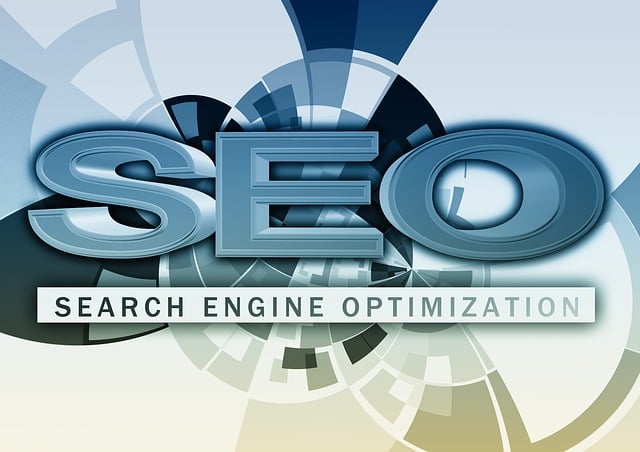SEO web design is a comprehensive strategy that optimizes websites for higher search engine rankings, boosting visibility and organic traffic. It involves understanding user behavior, keyword research, and best practices catering to both users and search engines. Key components include natural content keyword integration, enhanced site speed, mobile responsiveness, high-quality content creation, and strategic link building. This approach bridges user expectations with search algorithm requirements, providing a balanced mix of aesthetics and functionality for improved usability and performance. By implementing these multifaceted techniques, businesses can establish a successful online presence in today's competitive digital landscape.
“Unleash your website’s full potential with an optimized SEO web design strategy. In today’s digital landscape, understanding search engine optimization (SEO) is crucial for online success. This comprehensive guide delves into the essential elements of SEO web design, from basic principles to advanced techniques.
Discover how keyword research, on-page optimization, technical refinements, mobile optimization, content creation, and strategic link building collectively enhance search engine visibility. Learn to measure performance, analyze results, and stay ahead in the ever-evolving world of SEO web design.”
Understanding SEO Web Design: The Basics

SEO web design is an essential aspect of creating a successful online presence. It involves optimizing websites to rank higher on search engine results pages (SERPs), thereby increasing visibility and attracting more organic traffic. The basics of SEO web design include understanding user behavior, keyword research, and implementing best practices that cater to both users and search engines. By incorporating relevant keywords naturally into content, enhancing site speed, ensuring mobile responsiveness, and creating high-quality, engaging content, websites can improve their search engine rankings.
At its core, SEO web design is about bridging the gap between user expectations and search engine algorithms. It requires a strategic approach that balances aesthetics with functionality, making sure that websites are not only visually appealing but also optimized for faster loading times, easier navigation, and better overall usability. This holistic approach ensures that your website doesn’t just look good, but also performs well in driving conversions and establishing a strong online presence.
Key Components of Effective SEO Strategies for Websites

An effective SEO web design strategy is a multifaceted approach that integrates various components to enhance online visibility and attract organic traffic. Firstly, keyword research is essential; identifying relevant search terms allows for tailored content creation that resonates with target audiences. Integrating these keywords naturally throughout page titles, headings, meta descriptions, and unique, valuable content ensures search engine algorithms understand the site’s purpose.
Additionally, website structure and navigation play a crucial role in SEO. A logical, user-friendly layout with clear breadcrumbs and an XML sitemap aids both users and search engines in traversing the site. Fast loading speeds, mobile responsiveness, and high-quality visuals further enhance the user experience, encouraging longer browsing sessions and lower bounce rates, which are favored by search algorithms.
Role of Keyword Research in SEO Web Design

Keyword research is a cornerstone of effective SEO web design. It involves identifying and understanding the terms and phrases your target audience uses when searching for products, services, or information related to your business. By conducting thorough keyword research, we uncover valuable insights into user intent, search trends, and competitive landscapes. This knowledge guides strategic decision-making in content creation, page optimization, and overall website architecture.
In SEO web design, targeted keywords are strategically incorporated into various elements of a website, including meta tags, headers, URLs, and content. This seamless integration enhances both the user experience and search engine visibility. Well-researched keywords help ensure that your website ranks higher in search engine results pages (SERPs), driving organic traffic and increasing your online presence among potential customers actively seeking your offerings.
On-Page Optimization Techniques for Better SEO

In the realm of SEO web design, on-page optimization techniques play a pivotal role in enhancing search engine rankings. These strategies focus on refining individual web pages to make them more relevant and appealing to both users and search engines. Key techniques include keyword research and strategic placement, ensuring that content is well-structured and contains the right balance of essential keywords. Meta tags, headers, and alt text also contribute significantly; they provide concise summaries and context for each page, helping search algorithms understand the content better.
Additionally, improving page load speed, optimizing images, and creating a mobile-friendly design are crucial. These factors not only enhance user experience but also serve as vital signals to search engines. By implementing these on-page optimizations, websites can significantly improve their visibility and attract more organic traffic, ultimately strengthening their online presence in the competitive digital landscape.
Technical SEO Considerations for Seamless User Experience

In the realm of SEO web design, technical considerations play a pivotal role in fostering seamless user experiences. From site speed optimization to mobile-friendliness, ensuring your website is technically sound enhances not just its search engine rankings but also its overall usability and accessibility. Fast loading times, responsive design, and well-structured code are fundamental elements that contribute to a positive user journey, encouraging visitors to explore more of your site.
Technical SEO also involves addressing crucial factors like schema markup, XML sitemaps, and error-free 404 pages. These seemingly small details can significantly impact how search engines crawl and index your site, ultimately affecting its visibility in search results. By prioritizing these technical aspects, you create a robust online presence that not only captivates users but also aligns with the latest industry standards for optimal SEO performance.
Mobile Optimization and Its Impact on SEO Rankings

In today’s digital era, mobile optimization is no longer an optional component of a successful SEO web design strategy; it’s a necessity. With a vast majority of internet users accessing websites via their smartphones and tablets, search engines have adapted to prioritize mobile-friendly sites in ranking algorithms. This shift is driven by the belief that users expect seamless and fast loading experiences on all devices. A website optimized for mobile offers improved navigation, easier reading, and quicker access to information, enhancing user satisfaction and encouraging longer visits—all factors that positively influence SEO rankings.
Moreover, mobile optimization ensures that a site’s content, images, and metadata display accurately across different screen sizes and orientations. This consistency sends powerful signals to search engines about the website’s quality and relevance. By implementing responsive design techniques, developers ensure that SEO web design keeps pace with technological advancements, catering to both desktop and mobile users without compromising performance or functionality.
Creating Quality Content for Enhanced Search Engine Visibility

In the realm of SEO web design, creating quality content is a cornerstone of enhancing search engine visibility. Compelling and relevant content not only captivates your target audience but also signals to search engines that your website offers valuable information. By integrating strategic keywords naturally into well-crafted copy, you improve your site’s relevance for specific user queries, boosting its ranking on search results pages (SERPs).
High-quality content goes beyond mere keyword stuffing. It includes visually appealing elements like images and videos, as well as easy-to-scan sections with clear headings and subheadings. Regular updates to keep content fresh and accurate also demonstrate your website’s active engagement with its audience, further strengthening its SEO performance in a competitive digital landscape.
Link Building Strategies: A Vital Aspect of SEO Web Design

Link building is a fundamental strategy within the realm of SEO web design, playing a pivotal role in enhancing a website’s online visibility and authority. It involves acquiring backlinks from other websites, which act as digital endorsements, signifying a site’s reliability and relevance to search engines like Google. These backlinks not only drive traffic but also contribute to the overall ranking potential of the linked pages.
Effective link-building strategies can include guest blogging, where contributors share content on reputable sites, thereby earning backlinks; creating high-quality, shareable resources that naturally attract links; or collaborating with industry influencers who can promote and link to your website. Each approach should align with the core principles of SEO web design, focusing on generating organic, relevant traffic while providing a positive user experience.
Measuring and Analyzing SEO Performance

Measuring and analyzing SEO performance is an integral part of any successful SEO web design strategy. It involves tracking key metrics to gauge how effectively your website ranks on search engines, attracts organic traffic, and converts visitors into customers. By utilizing tools like Google Analytics and Search Console, you can gain valuable insights into user behavior, keyword rankings, backlink profiles, and more.
Regular analysis allows for data-driven decisions, helping to identify areas of strength and weakness in your SEO strategy. For instance, you may discover that while your website has high traffic, the bounce rate is high, indicating a potential issue with user experience or content relevance. This information can then be used to optimize your site structure, improve content quality, and refine your SEO tactics, ultimately enhancing the overall performance of your SEO web design.
